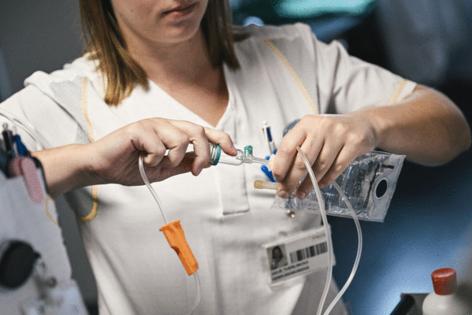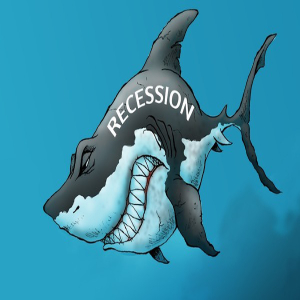Lisa Jarvis: Forgotten in the IV shortage? Patients who need it to eat
Published in Op Eds
Earlier this month, as Hurricane Milton barreled through the Gulf of Mexico with a ferocity that brought one Florida-based meteorologist to tears, Beth Gore’s biggest worry wasn’t the imminent threat to her home just south of Tampa. The mom of six was too focused on making sure her son Manny had the nutrients he needed to survive.
Manny is one of the estimated 40,000 people in the U.S. who relies on parenteral nutrition. It’s a mix of proteins, fats, sugars and vitamins delivered directly into the veins of people unable to digest food. This small, vulnerable group has been acutely impacted by the current shortage of IV fluids — and they are falling through the cracks.
Some can eat a little by mouth, while others can take in fluids, but no food. And then there are the most extreme cases, like Gore’s 15-year-old son Manny. “Not one calorie, not one sip, nothing other than parenteral nutrition,” says Gore, who leads the home nutrition advocacy group Oley Foundation.
That put the community in crisis mode after Hurricane Helene sidelined production of IV bags at a Baxter Inc. facility in North Carolina. That facility makes 60% of the IV fluids used in the U.S. It was only a lucky break that prevented the situation from becoming even worse: Hurricane Milton weakened before hitting Florida, sparing the Daytona Beach site of B. Braun, another key producer of IV fluids.
But what happened in North Carolina is bad enough. In addition to sterile water and saline solution, the plant made dextrose, a vital component in IV nutrition. Without it, patients can develop dangerously low blood sugar levels. The dextrose shortage has prompted providers to prioritize the sickest patients, which means others have been forced to make anywhere from moderate to dramatic changes to their nutrition intake.
Jo Lewis, who lost her stomach, esophagus and most of her small intestine following complications from a benign tumor, has been totally reliant on IV nutrition since 2018. The dextrose shortage meant an abrupt shift in her formula that caused her blood sugar to plummet. In the first week of the shortage, she couldn’t make it out of her bedroom. “I was just weak and miserable,” Lewis, who lives in a suburb of Columbus, Ohio, says. Still, “I know there are some getting hit even harder than I am.”
The situation is more complicated than the saline, sterile water and dextrose shortages. Vitamins used in IV nutrition had also been in shortage prior to Helene. Then, less than two weeks after the storm, the community that relies on learned that CVS plans to sell or close down its home infusion services unit, called Coram. Patient advocates say other home infusion services also seem on the brink of collapse.
When someone gets dropped by their home infusion company, their alternatives might be extremely limited based on location, insurance coverage, and whether other providers have capacity for more patients, explains Kathleen Gura, president elect of the American Society of Parenteral and Enteral Nutrition. Reimbursement for those services, meanwhile, can be pennies on the dollar, meaning providers are dwindling. If they can’t find a provider, the last-ditch option is to be hospitalized. Manny was among those dropped from service and as Gore scrambles to find him a new one, she worries he could end up stuck in a hospital for a month or more.
The wheels are coming off the bus for this vulnerable group, and we’re simply letting it happen. The priority of the Department of Health and Human Services has been to address the IV saline shortage — and understandably so, as it’s a product used in vast quantities every day by hospitals around the country. But advocates fear the lack of dextrose is going unnoticed. These vulnerable patients are last in line to get help.
The aftermath of Hurricane Helene is yet again drawing attention to the fragility of the U.S. drug supply chain, and should push leaders to act with more urgency to improve the resilience of the nation’s medicine cabinet. But solving the IV, vitamin and dextrose shortages aren’t enough to help this fragile group of patients. They also need the for these most basic services to be reimbursed at a rate that allows providers to stay in business.
Until that happens, patients and their families will remain in crisis. Gore compares the current situation to being on a sinking ship and feeling the momentary relief of a life boat arriving, only to be thrown right back onto the sinking ship.
That constant struggle to just stay afloat is maddening, in no small part because of the basic nature of what these patients need. Gore puts it into terms that are hard to argue with: “We’re fighting for water and sugar.”
_____
This column does not necessarily reflect the opinion of the editorial board or Bloomberg LP and its owners.
Lisa Jarvis is a Bloomberg Opinion columnist covering biotech, health care and the pharmaceutical industry. Previously, she was executive editor of Chemical & Engineering News.
_____
©2024 Bloomberg L.P. Visit bloomberg.com/opinion. Distributed by Tribune Content Agency, LLC.




























































Comments